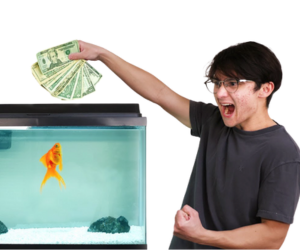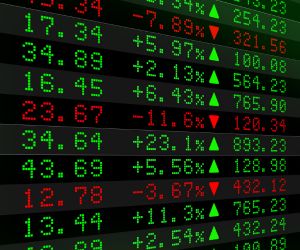MICHAEL REEVES GOLDFISH TRADING EXPERIMENT EXPLAINED
When the phrase “Michael Reeves goldfish” started spreading across YouTube, Twitter and finance memes, it sounded like a throwaway joke: a chaotic coder letting a tiny orange fish YOLO its way through the stock market. Look closer, though, and the stunt was more than a punchline. It blended live streaming culture, algorithmic trading, behavioural finance and dark tech humour into one experiment perfectly suited to an age where retail investors swap charts and memes in the same breath. This guide unpacks who Michael Reeves is, how the goldfish trading rig actually worked, what risks were real versus for show, and what thoughtful investors, creators and curious onlookers can learn from a fish that briefly became the internet’s most infamous “portfolio manager”.

Who is Michael Reeves
To understand why the phrase “Michael Reeves goldfish” captured so much attention, you first need to understand the person behind the aquarium. Michael Reeves is a software developer turned content creator who built his audience not with polished corporate demos, but with unhinged, highly edited experiments where code meets chaos. Instead of quietly building apps, he builds things like robotic surgeons that should never go near a hospital, laser-guided tracking bots and, eventually, a goldfish-driven trading system that forced financial markets to share screen time with a small, indifferent pet.
He began posting programming videos that felt more like sketch comedy than tutorials. The edits are fast, the jokes are self-aware, and the code is the straight man in the gag — precise, often clever, and then used for something gloriously unnecessary. This formula positioned him as the meme trader’s favourite engineer: someone who understands the logic under the bonnet, but refuses to treat technology, or markets, as sacred. So when fans saw “goldfish invests in stocks” appear in their recommendations, they knew it would be equal parts nonsense and surprisingly competent engineering.
Where many tech influencers present themselves as sober guides to financial freedom, Reeves leans into uncertainty and entertainment. He does not pose as a financial adviser, and his tone makes that obvious. The point of the goldfish experiment was not to promote a foolproof trading system, but to stress-test how far you can push modern broker APIs, basic computer vision and meme culture before someone in compliance starts sweating. In an online landscape crowded with serious faces and careful disclaimers, that irreverence made his projects stand out — and share extremely well.
The audience he has built is a strange but familiar blend: retail traders who joke about “apes together strong”, university students half-learning to code, software engineers taking a break from sprint planning, and casual viewers who simply enjoy watching someone build elaborate nonsense. This demographic is already primed to see financial markets as semi-rational at best and comedy at worst. The idea that a goldfish might as well be making some of the trades they see promoted online felt less like a stretch and more like a brutally honest metaphor.
Reeves also belongs to a broader creator cohort that live streams, posts long-form videos and interacts on social platforms daily. This always-on presence means jokes can evolve into projects rapidly. A throwaway line about “letting a fish pick my investments” can turn into a fully wired tank, a camera rig, a pile of cables and a broker connection faster than a traditional media outlet could even assign a producer. The goldfish experiment grew out of that culture of rapid prototyping, escalating gags and a willingness to spend far too much time and money on a bit simply because it is funny.
Why a goldfish was the perfect co-star
Choosing a goldfish was not only funny — it was strategic. A goldfish is universally recognisable, visually clear on camera and carries strong symbolism. It is small, forgetful in the popular imagination and completely indifferent to the value of your portfolio. That makes it the ideal stand-in for randomness. When Reeves asked viewers to imagine a fish beating or matching human traders, he was not claiming that goldfish have hidden financial wisdom; he was poking at the uncomfortable suspicion that much of short-term trading performance is luck dressed up in jargon and screenshots.
From a production perspective, a goldfish also behaves in just the right way. It moves often enough to keep the feed visually interesting, but not so quickly that tracking becomes impossible with consumer hardware. You can light a tank relatively easily, frame it in a fixed shot and then build an interface on top of that video. The “Michael Reeves goldfish” rig depended on this balance of unpredictability and simplicity: the fish’s movement would feel organic and surprising, while the underlying system that translated that movement into buy or sell signals could remain robust and controllable.
There is also a cultural dimension. Pets are deeply entrenched in internet content; from cat videos to dog reaction clips, animals lower the emotional stakes and raise the shareability of otherwise niche topics. High-frequency trading algorithms and broker APIs are not inherently viral. A small orange fish drifting into a “buy” zone, triggering an audible alert and sending real money into a position absolutely is. The “Michael Reeves goldfish” concept wrapped complex financial and technical ideas in a format that casual viewers felt comfortable sharing in group chats without needing a finance degree.
All of this fits neatly with Reeves’s broader brand: he builds things that no sensible engineer would bother with, precisely to show what is possible, not what is advisable. This is important context when people treat the goldfish experiment as investment advice. His content is a moving, shouty disclaimer that the whole spectacle sits firmly in the “do not try this at home with your life savings” category. Understanding that intent is the first step in interpreting the “Michael Reeves goldfish” saga sensibly rather than as a blueprint for your next personal investing strategy.
Reeves blends real programming skill with chaotic humour, making technical projects accessible to non-specialists.
His audience expects experiments that push boundaries but are not meant as serious how-to guides for trading or investing.
The goldfish acts as a symbol of randomness, highlighting uneasy truths about short-term market performance.
Using a pet taps into familiar internet culture, increasing the chance that complex ideas will spread beyond finance circles.
Viewing the “Michael Reeves goldfish” project as performance art keeps expectations realistic and risk in perspective.
By the time the “Michael Reeves goldfish” video went live, all of these elements — his coding background, his audience’s expectations, meme-friendly pets and an undercurrent of scepticism toward financial orthodoxy — were already in place. The project landed not as an isolated gimmick, but as the natural next escalation in a career built on asking “what if we did the ridiculous thing, but correctly?” The answer, in this case, was to give a fish the kind of direct market access that many human traders dream of, and then let the cameras roll.
Inside the goldfish bot
The headline version of the story is simple: Michael Reeves wired his goldfish tank so that wherever the fish swam, it would trigger stock trades. The engineering reality under the meme was more structured. At its core, the “Michael Reeves goldfish” system converted random movement into buy, hold or sell decisions through a pipeline of camera input, computer vision, grid mapping and broker integration. Understanding that pipeline is crucial if you want to separate the deliberate design choices from the theatrics, and to see where the project mirrors, and where it diverges from, serious algorithmic trading.
First came the physical layout. Reeves divided the aquarium view into logical zones, each corresponding to an action or an asset. This grid could be overlaid on the video feed: perhaps one column for different stocks or ETFs, another for buy versus sell, and an area that meant “do nothing”. The goldfish itself became the cursor. When it drifted into a certain region and stayed long enough to be confidently detected, the system interpreted that as the fish issuing a “command”. This structure allowed a genuinely random creature to produce discrete, trackable signals that a computer could act upon.
The next layer was computer vision. A camera faced the tank, sending continuous frames to a small machine — typically a consumer-grade PC or microcontroller with enough power to run basic image processing. The software had to identify which cluster of pixels represented the fish, distinguish it from background objects, and track its position over time. This could be done with off-the-shelf libraries that detect motion or colour, or with more customised tracking logic tuned to the fish’s size and speed. For viewers, this is the invisible infrastructure; the chaotic “fish picks stock” joke rests on a surprisingly sober pillar of pixel maths.
From fish movement to trade execution
Once the system had the fish’s coordinates, it needed to translate those into financial instructions. Imagine the tank sliced into a grid on the x and y axes. One axis could control which asset the fish was interacting with — a tech stock, a broad index fund, perhaps a high-volatility play thrown in for comedic tension. The other axis could represent direction: buy when the fish is in the upper half of that asset’s column, sell when it drops into the lower half, and do nothing in a neutral middle band. This mapping is where Reeves’s control over the narrative quietly re-enters the picture.
Above this mapping layer sat risk controls. Even a comedian does not want to wake up to find that a restless fish generated hundreds of trades overnight. So the software could enforce rules: only one trade per interval, small position sizes and a cap on total exposure. It could require the fish to remain in a zone for a certain number of frames before confirming a signal, filtering out twitchy movements or camera noise. These mechanisms mirror real trading bots, which have to distinguish between meaningful signals and random fluctuations, even though in this case, the “signal” is intentionally random.
Execution came via a broker or exchange API. Many online brokers now provide developer access that allows authorised software to place trades on an account under strict conditions. Reeves’s code could format an order — buy or sell, quantity, ticker, order type — and send it securely to the broker whenever the fish triggered a valid event. The broker then routed the order to the market. To the outside world, these orders looked like any other retail trades; the order book does not know or care that the “trader” is swimming in a tank deciding between flakes and decor rather than staring at a bank of monitors.
On top of all this sat instrumentation for the audience. The video needed overlays showing what the fish was “deciding”, a running tally of profit and loss, and visual feedback when a trade fired. This dashboard layer turned the system from a private experiment into a spectator sport. It also ensured transparency: viewers could see in real time how the randomness played out over a series of trades, rather than just being told after the fact that the fish had a good or bad week. For anyone curious about how algorithmic systems behave over time, this was a playful introduction.
Critically, the “Michael Reeves goldfish” bot was not secretly a complex quantitative model. The whole point was that it was, at base, a randomness engine with a cute interface. Yet even a random strategy can have interesting properties when you constrain position size, diversify across assets and define clear rules. Over short periods, a random walk can look eerily similar to a human trader’s performance, especially if that human is also trading on noise, rumours and vibes. The experiment turned that uncomfortable possibility into something you could literally watch swim past.
The tank was divided into zones mapped to specific assets and actions, turning the fish into a living cursor.
Computer vision tracked the goldfish in real time, extracting coordinates from a continuous video feed.
Risk limits capped trade frequency, position size and total exposure, preventing the joke from becoming a disaster.
A broker API executed orders generated by the system, making the trades real rather than purely simulated.
On-screen overlays translated all this into a narrative viewers could follow: where the fish swam, what it “decided”, and how the account performed.
Seen from a distance, the whole system looks absurd: a small pet swimming through coloured rectangles while money moves in the background. Up close, it doubles as a simple blueprint for how many automated strategies work, just with more serious inputs. Data comes in, is processed into signals, filtered through risk rules and turned into orders. By replacing the signal with a goldfish, Reeves stripped the process down to its bones and made it obvious how much of the perceived “edge” in some trading approaches might just be a story layered on top of structured randomness.
What it really means
Once the laughter fades and the thumbnails scroll away, the “Michael Reeves goldfish” experiment leaves behind an uncomfortable question: if a random goldfish, routed through neat code and risk controls, can produce a performance curve that looks passable, what does that say about the way many humans trade? This is where the project stops being just a comedy sketch and becomes a surprisingly sharp piece of financial commentary. It highlights how much of short-term retail trading is effectively random, even when dressed in technical terminology, and how presentation can make noise look like signal.
Behavioural finance has long argued that humans are prone to overconfidence, pattern-matching and narrative building, especially around money. Give someone a few winning trades and they start telling a story about their “strategy”, even if their timing was indistinguishable from chance. The “Michael Reeves goldfish” setup compresses this into a visual metaphor: a literal fish swimming aimlessly still produces streaks of green and red on a chart. Viewers watch the account dip and recover, and some instinctively start cheering for the fish, as if it had intent. It does not; our brains are simply wired to see purpose in random walks.
Randomness, skill and meme portfolios
In markets, separating randomness from skill is hard even with professional tools. Over short horizons, almost any strategy can look brilliant or disastrous by chance alone. The “Michael Reeves goldfish” bot dramatises this by putting the source of randomness front and centre. If a goldfish can have a “good week” in the market, then so can almost any impulsive trader. The uncomfortable implication is that your recent streak tells you very little about your true edge unless you evaluate it over long periods, across many trades, with position sizing and risk properly accounted for.
Meme portfolios — collections of assets bought because they are trending on social media rather than because of fundamentals — operate in a similar space. For many participants, the attraction is not disciplined long-term wealth building, but the thrill of volatility and the chance of being early to a pump. In that environment, swapping out “my research” for “my goldfish” is less of a downgrade than traditional finance would like to believe. Reeves’s experiment holds up a mirror to that culture, saying, effectively, “If we are honest, a fish might as well be picking some of these plays.” It is a joke with teeth.
This does not mean that all trading is pointless or that research is useless. What it does mean is that without clear plans, risk limits and time horizons, many retail traders end up with portfolios whose performance is dominated by luck. The “Michael Reeves goldfish” rig quietly demonstrates the importance of the unglamorous bits: the constraints coded around the fish. Those constraints — maximum allocation, diversification, exit rules — are exactly the same tools serious investors use. In other words, the edge was never the fish; it was the framework wrapped around it.
Short-term trading results often reveal more about randomness than about a trader’s true skill.
Narratives built after the fact can make random streaks feel like evidence of a robust strategy.
Meme-driven portfolios and a goldfish-driven bot both lean heavily on volatility and attention, not on fundamentals.
Risk controls, diversification and time horizon matter more than clever entry signals over the long run.
The real lesson of the “Michael Reeves goldfish” experiment is to respect structure, not streaks.
A new way to teach risk
One underappreciated impact of the “Michael Reeves goldfish” saga is its potential as an educational tool. Traditional investing books and courses struggle to hold attention, particularly for younger audiences raised on clips and streams. By contrast, a chaotic video where a goldfish “chooses” trades but the creator still talks through position sizing, order types and broker integration sneaks real concepts into an entertaining package. In a classroom, workshop or online course, you could show segments of the project to spark discussion about randomness, risk and the dangers of overfitting strategies to short-term data.
Imagine reframing the project as a lab exercise: students design their own “goldfish-style” bots using different sources of randomness — dice rolls, random number generators, shuffled cards — and run them in a simulated market. They then compare performance across many trials, learning first-hand how volatile random strategies can be, and how risk controls change the distribution of outcomes. Reeves’s version uses an actual fish because it is funny and visually striking, but the educational spine underneath it is completely portable. It turns abstract lessons about variance and drawdowns into something you can see, measure and, crucially, remember.
This is the new concluding idea the “Michael Reeves goldfish” experiment hints at: not just that markets can feel absurd, but that embracing that absurdity might be the most effective way to teach seriousness. Dry warnings about leverage rarely compete with the dopamine hit of a successful gamble; a goldfish accidentally blowing up a paper portfolio on screen might. By dramatising both wins and losses in a low-stakes, humorous format, creators can help viewers internalise the message that risk is real long before they are tempted to put major capital at stake.
For viewers around the world, often watching markets that open and close in distant time zones, the “Michael Reeves goldfish” clip is a reminder that you do not need to be glued to every tick to participate thoughtfully. You can acknowledge the circus, share the memes and still choose a calmer path: diversified funds, automatic contributions and clear long-term goals. The fish can have the spotlight; your job is to build a financial plan that does not depend on spectacle to work.
In the end, the phrase “Michael Reeves goldfish” has stuck precisely because it captures a feeling many modern investors recognise: that markets are a strange blend of data, stories, algorithms and luck. Reeves packaged that feeling into an aquarium, some code and a torrent of jokes. If you can laugh at the project and still walk away more cautious about overconfident trading, then the experiment has done more good than many serious-sounding lectures. The fish will forget; you, ideally, will not.








